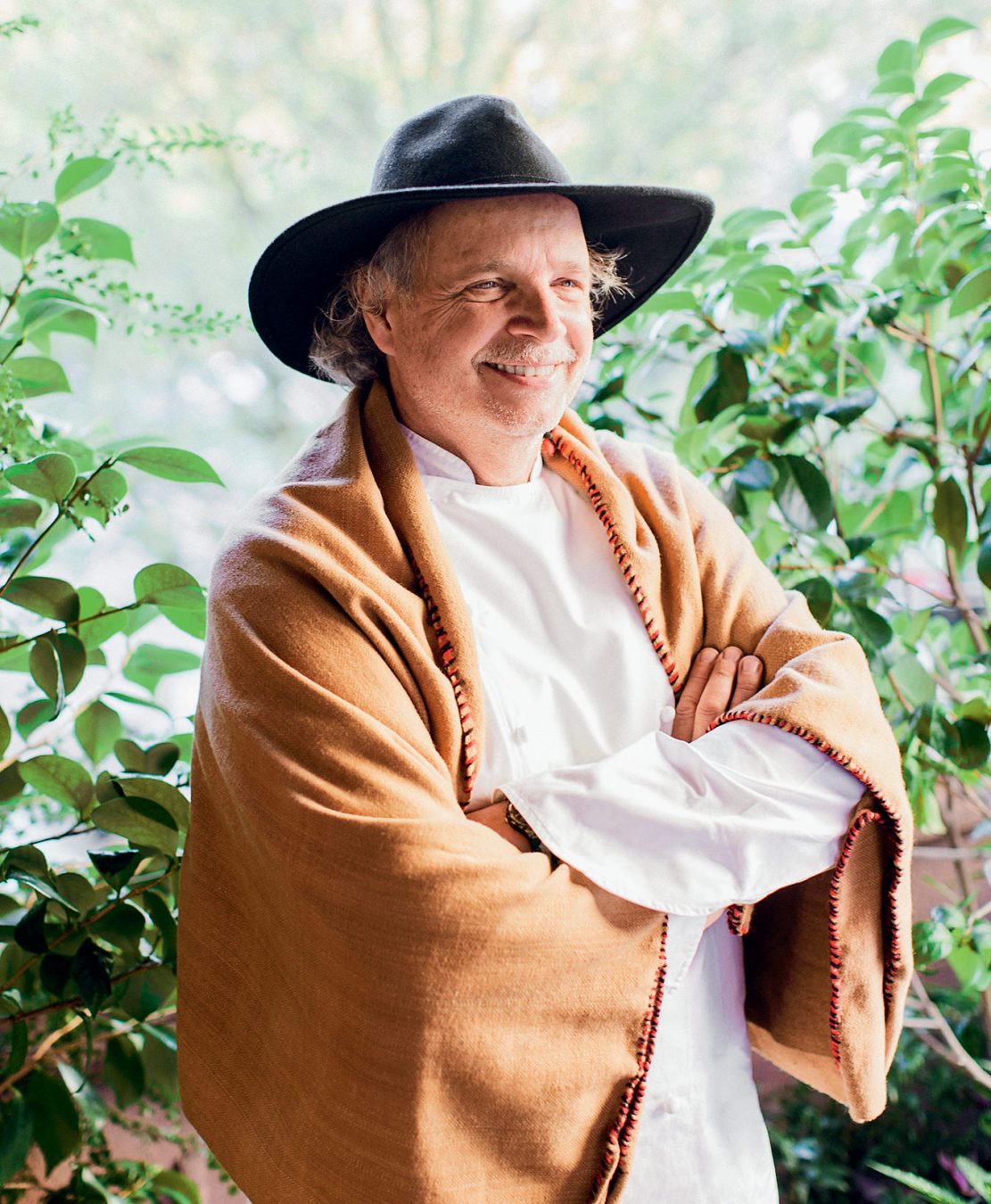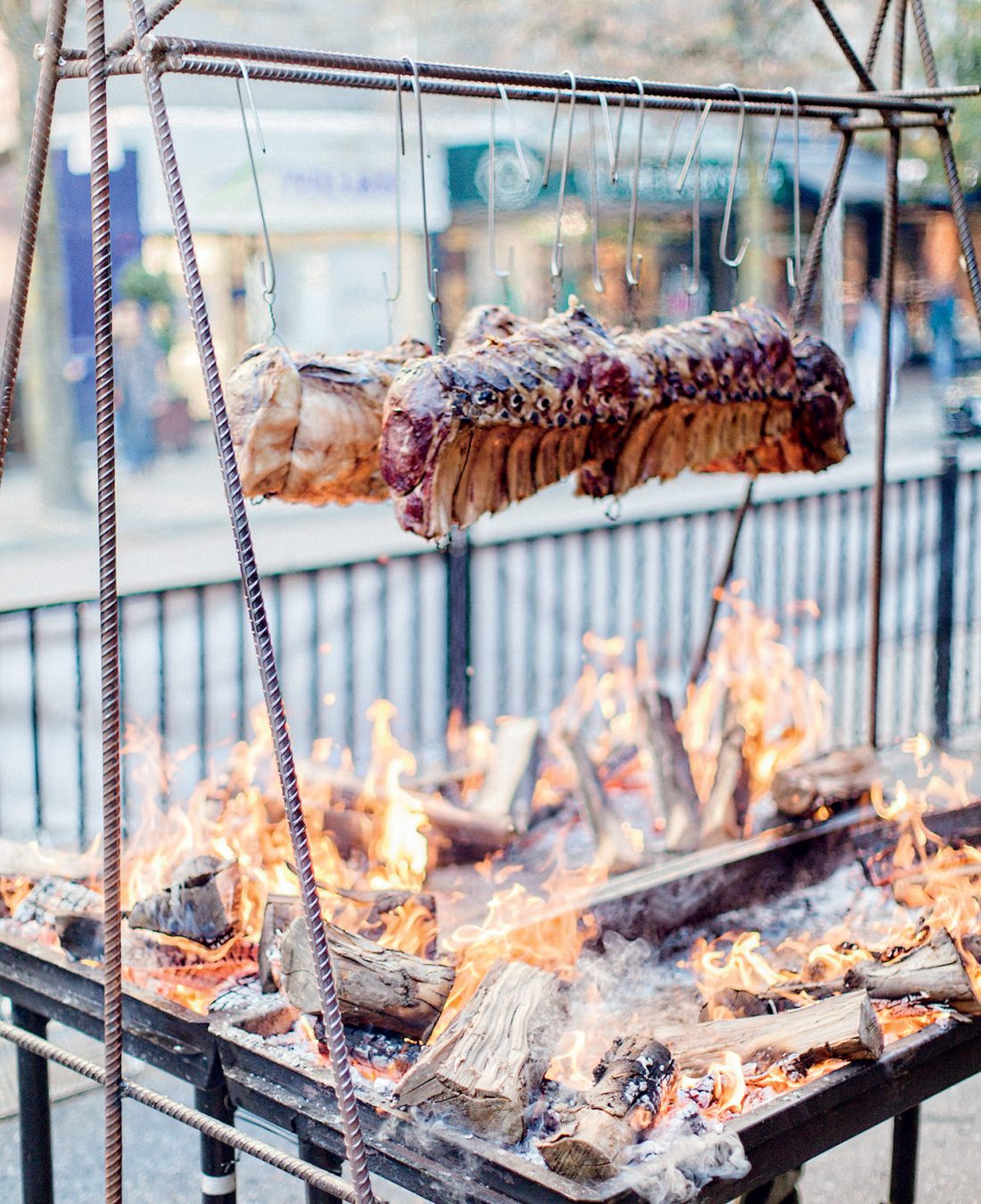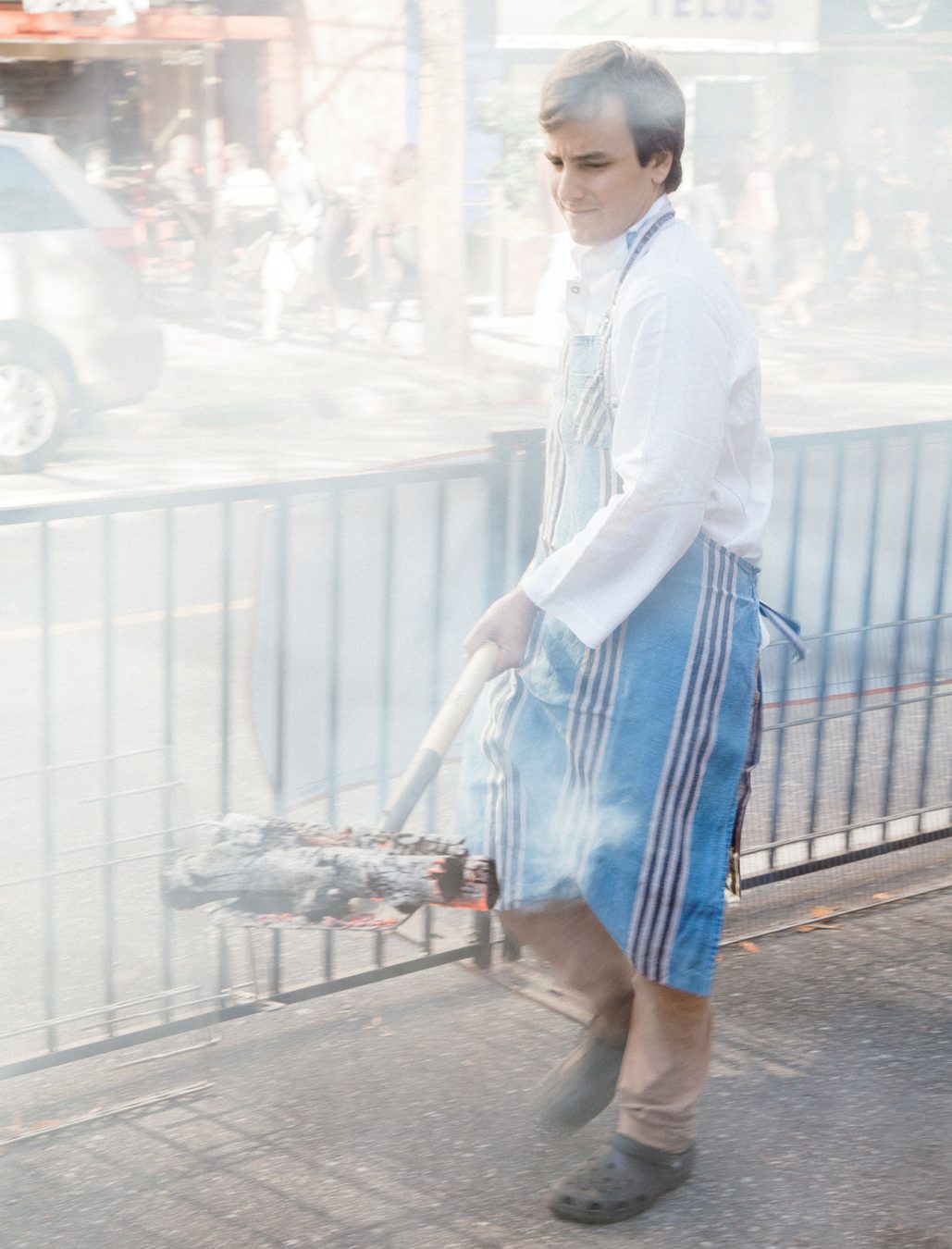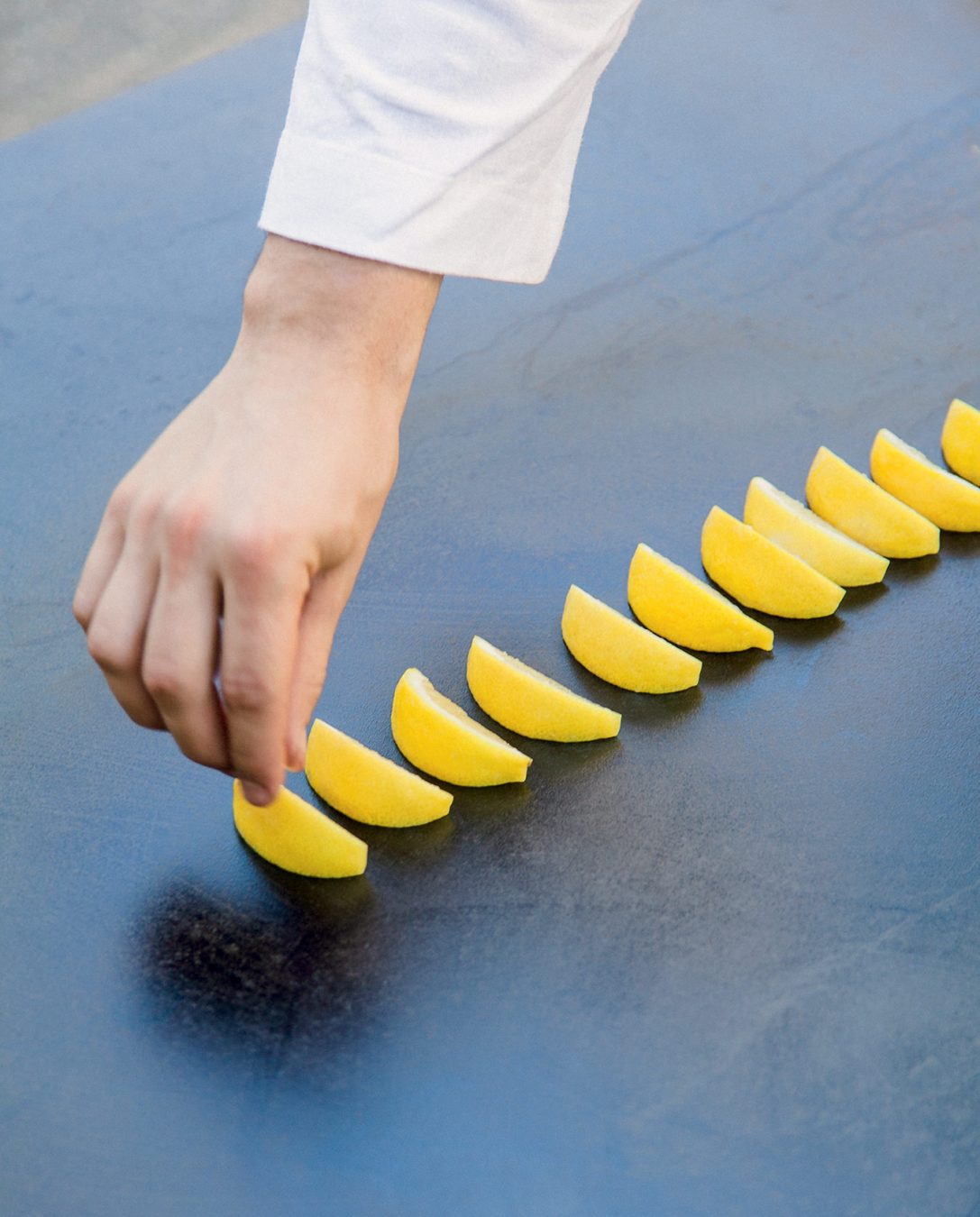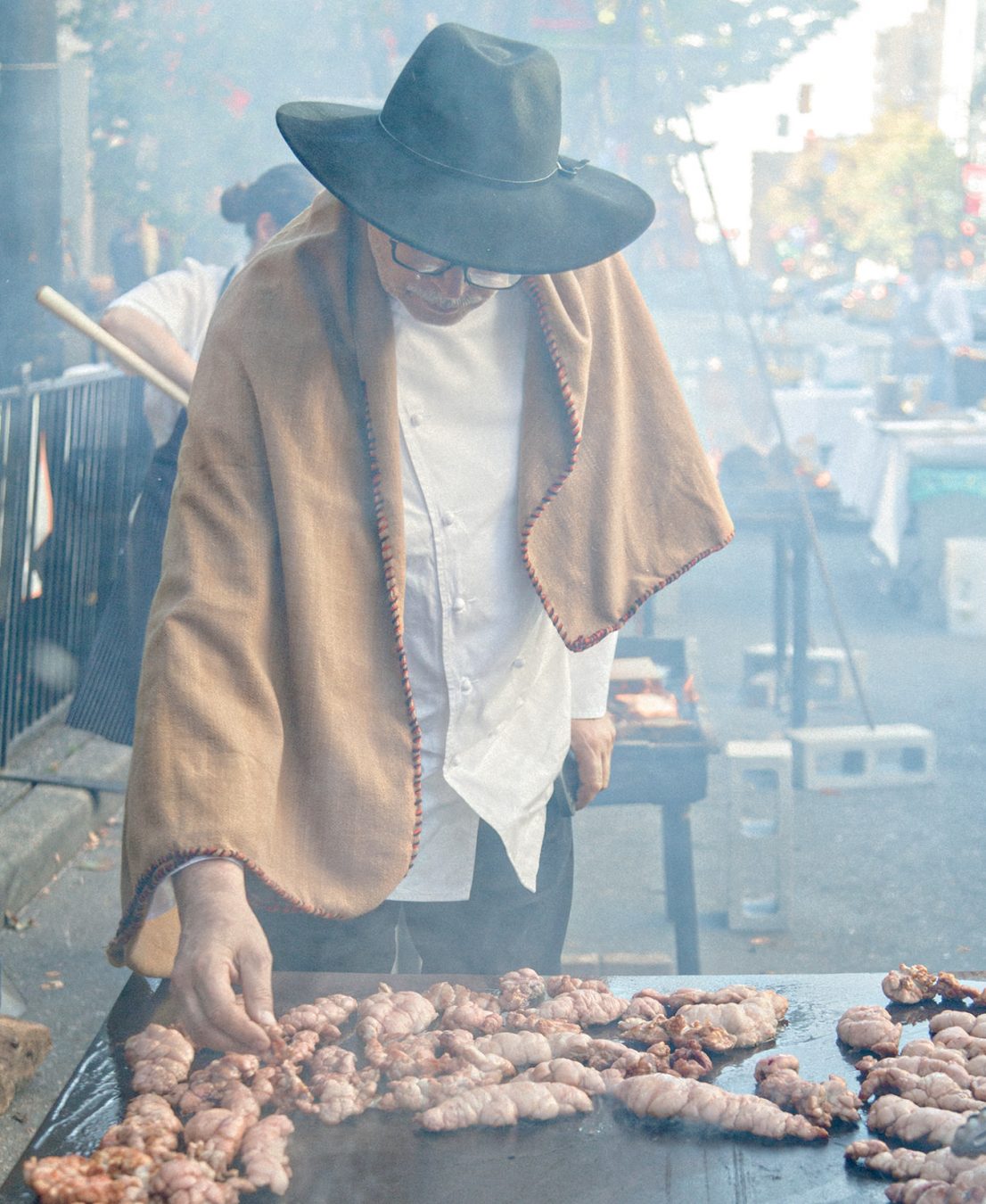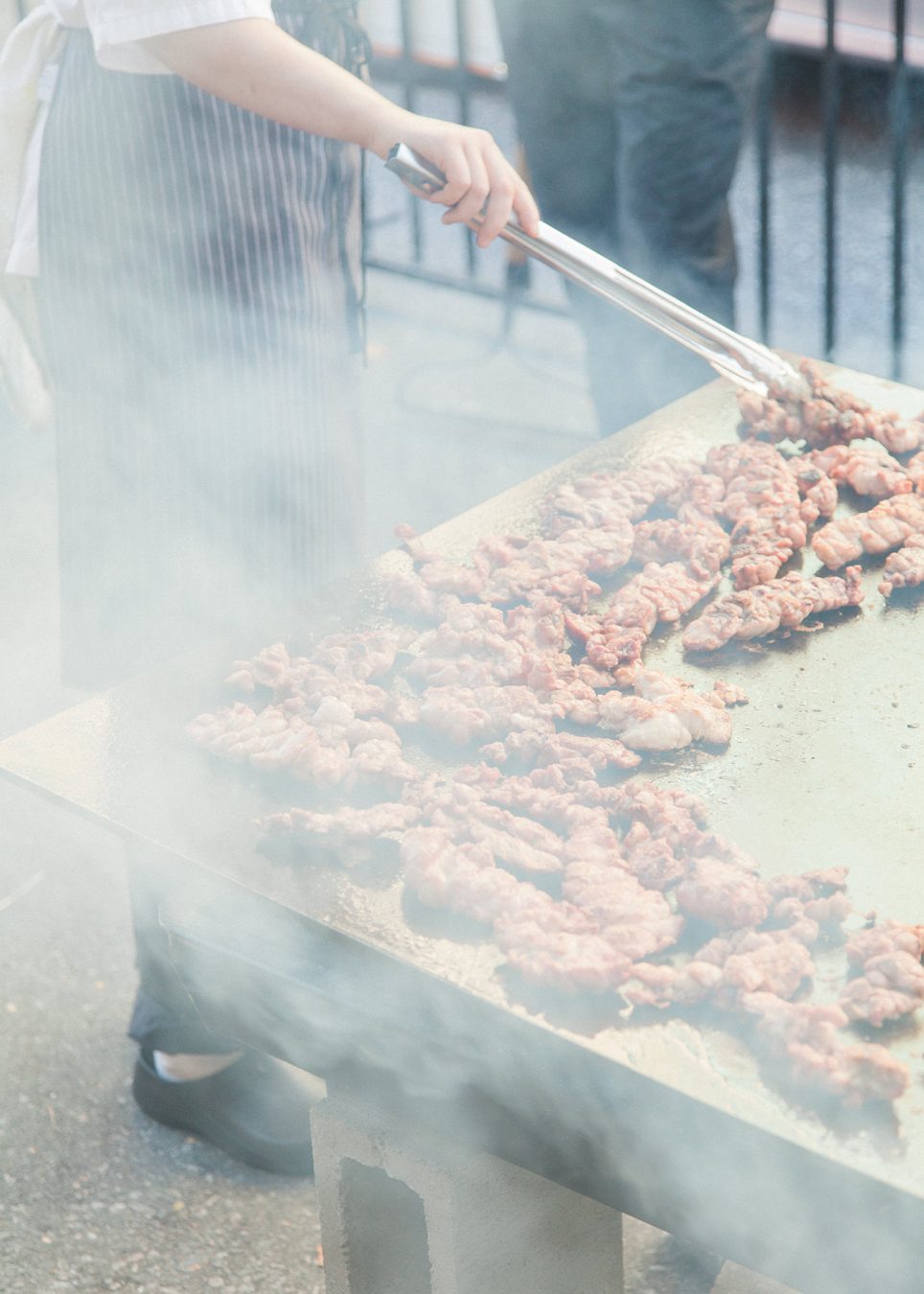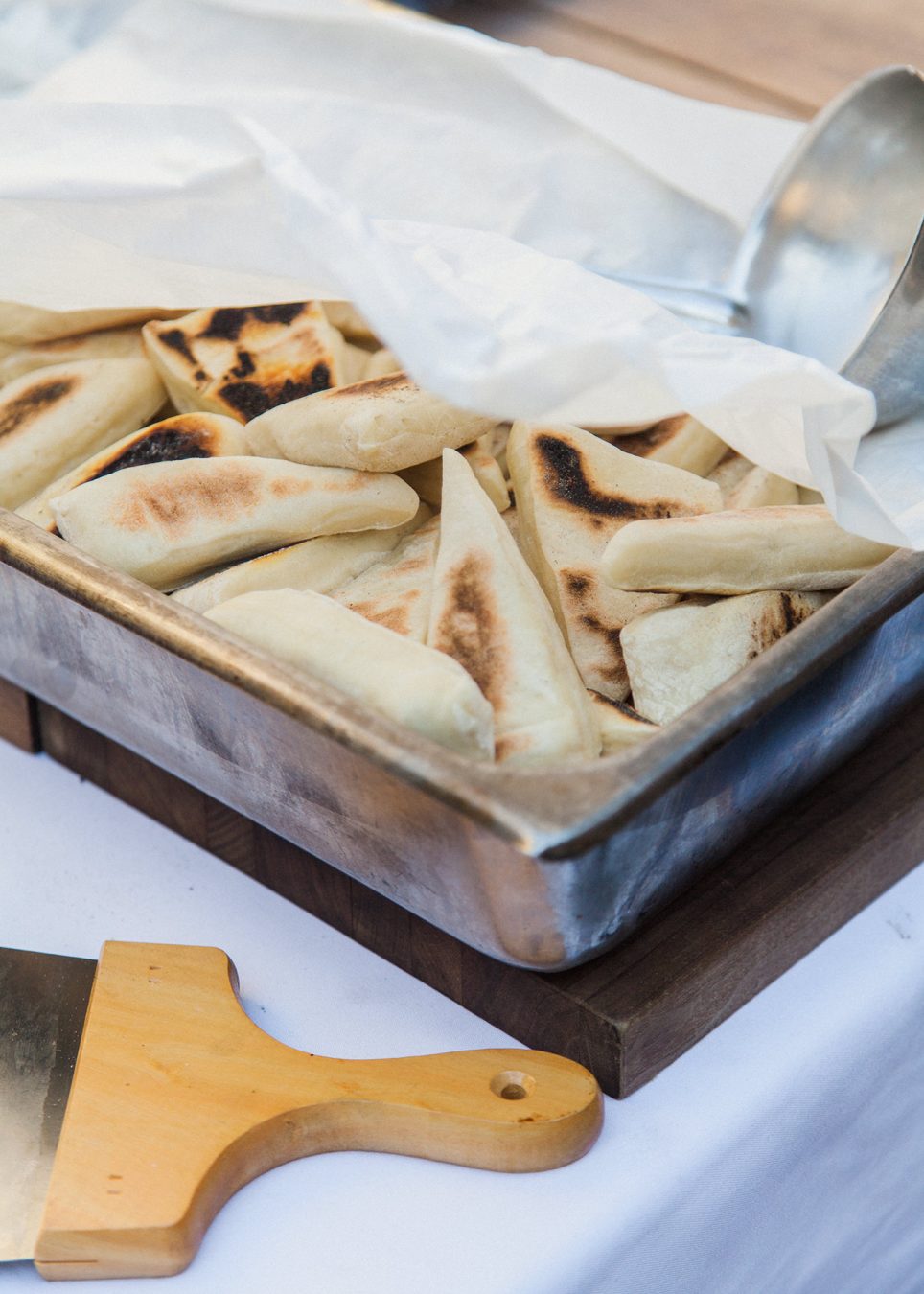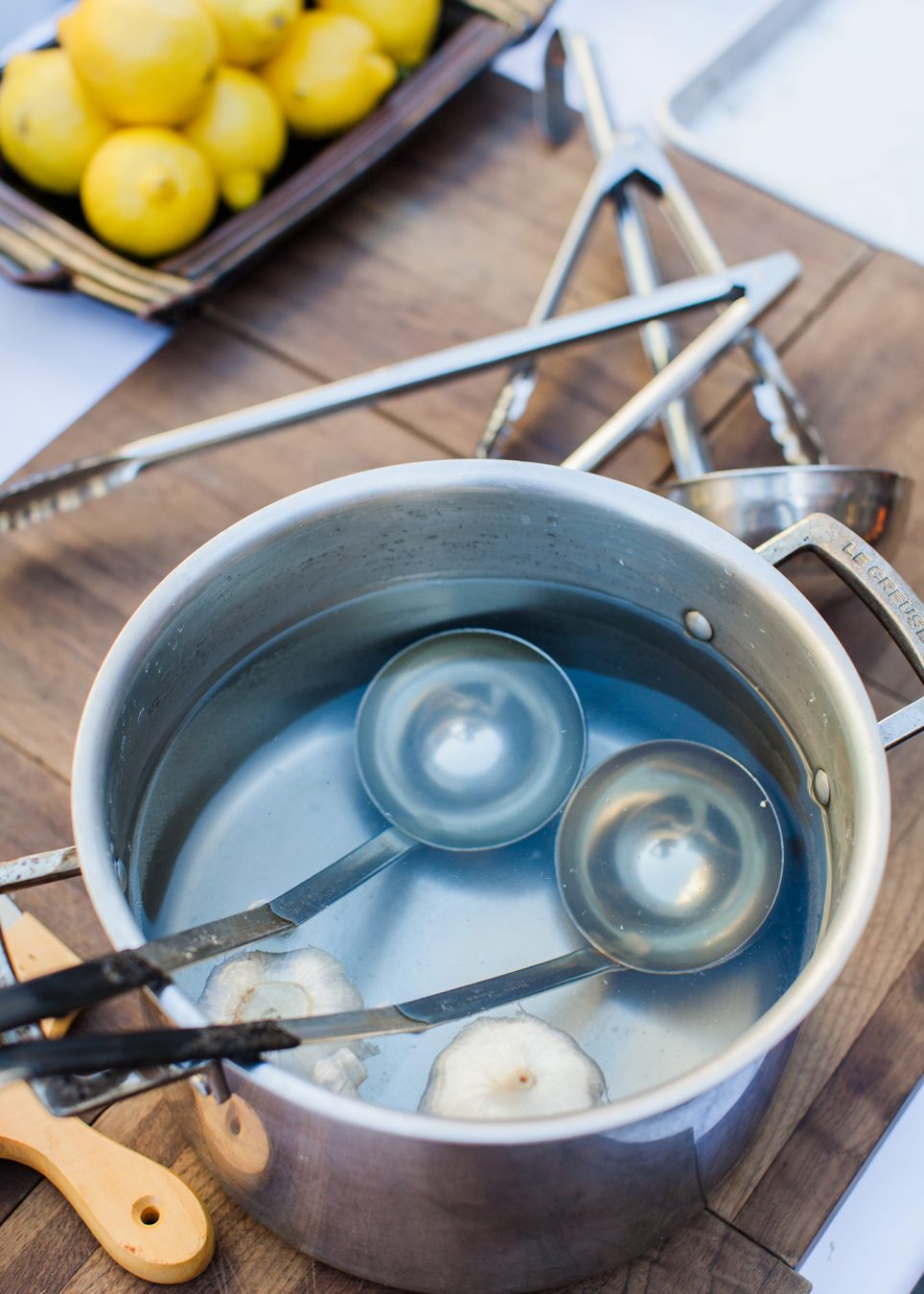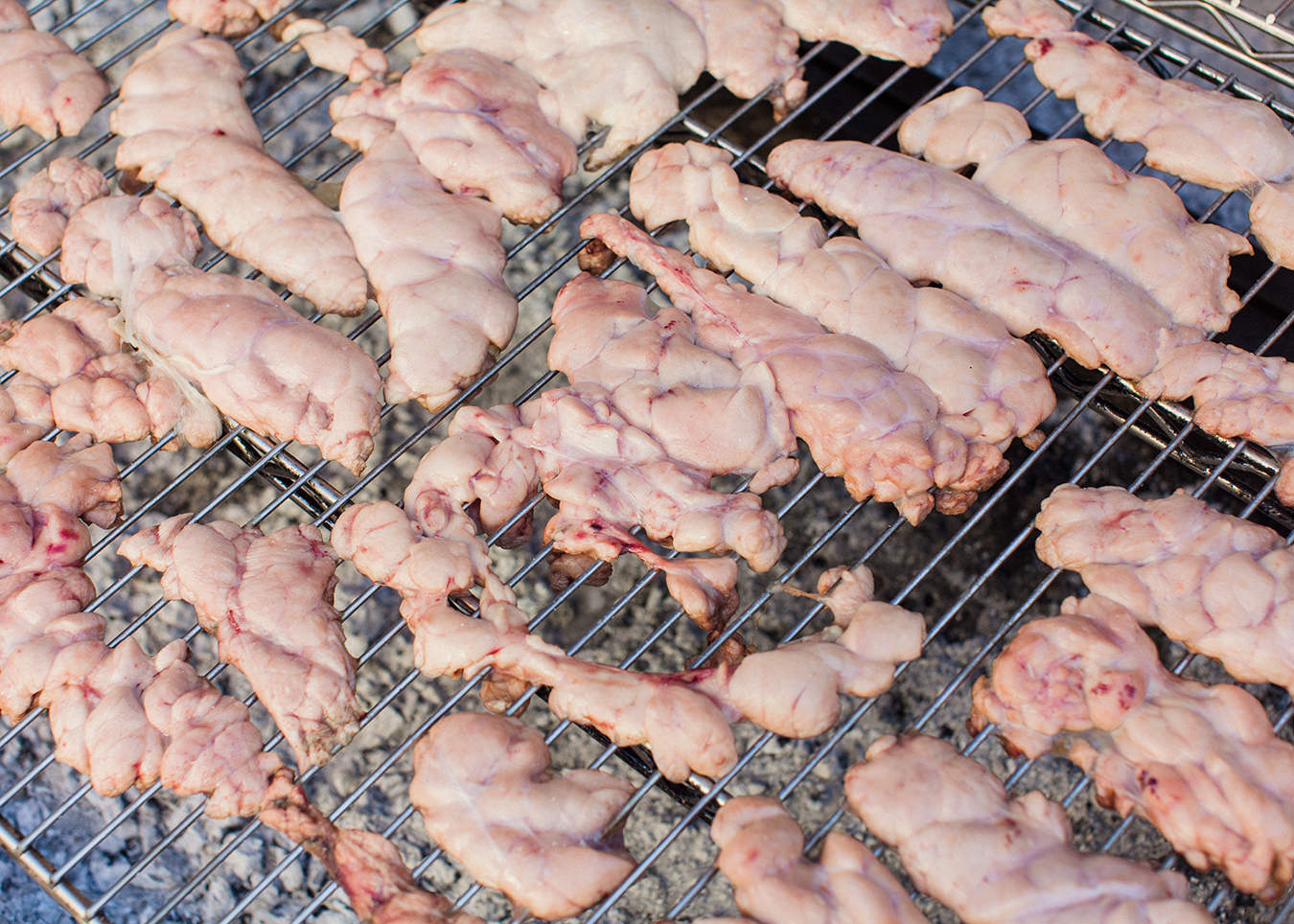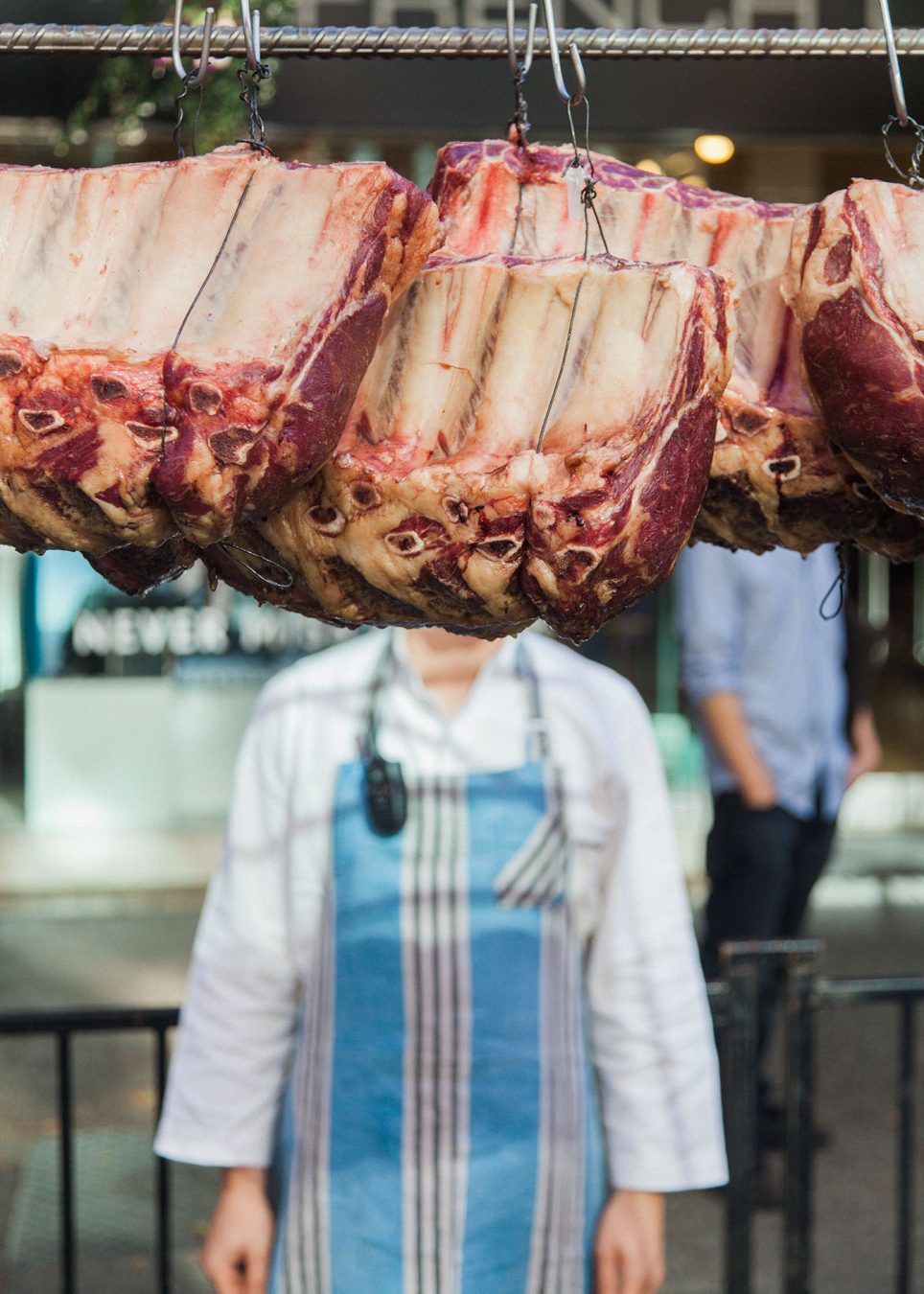My introduction to Francis Mallmann came when I accepted the job as chef at CinCin restaurant. It was not a physical encounter but an awareness of some mythical figure who used fire as his cooking medium. In The Soul of a Chef: The Journey Toward Perfection (2000), Michael Ruhlman writes: “the restaurant chef [is the] most dynamic, the creature that . . . most people were interested in, the successful entrepreneur, showman, superlative craftsman and food talent”. That is Mallmann, in every way.
Celebrity chefs are one thing, but most chefs carry the burden of knowing that the celebrity chef is not the true artisan of the kitchen. The true craftsman spends his time fine tuning his métier. To this end Mallmann is the epitome of a kitchen guru, respected by all. One cursory look at his book, Seven Fires: Grilling the Argentine Way (2009), reveals something unique and beguiling. In a global world where collaboration means food styles are copied and, subconsciously at least, all chefs are influenced by each other, Mallmann walks his own path.
This was echoed at a dinner at New York’s Gramercy Tavern in 2012. By sheer coincidence, Jack Evrensel (founder and then owner of Toptable Group) had forwarded an email to me. The message was of an autumn harvest dinner in aid of homeless and hungry children. The star chef lineup included Michael Anthony, John Besh, Carlo Mirarchi, Karen DeMasco and, what really captured me, Francis Mallmann.
At the exciting prospect of experiencing Mallmann’s cooking, I purchased a ticket to the event. The Toptable public relations team contacted Mallmann’s personal assistant and introduced us by way of email. Arrangements were made. I met him at the Mercer Hotel to talk about our shared passion for cooking with fire, and to introduce the possibility of him travelling to Vancouver to cook at CinCin.
His persona emerges quickly. He is an individual who had mastered his craft and understands fully its meaning. His attire was a little eccentric: signature gaucho-style hat, brightly coloured sneakers, all to go along with a humble and honest personality. We warmed to each other easily. His responses to my questions were representative of a chef of his experience and stature: measured, honest, concise, and direct.
We talked of burning wood and cooking. It was a fascinating conversation that ended with him pre-empting my final question by asking if we wanted him to do an event in Vancouver. I confirmed our intention, his response was positive and the seeds were sown. He requested that we stay in touch, paid the bill, and promptly left, explaining that he had to get back to the Gramercy.
On the evening of the event, as I approached the Gramercy, a crowd was circulating on the street in front of the restaurant. Mallmann was cooking outside. Striped sea bass infiernillo (poetically translated to “little hell”), crusted in salt and cooked between two fires. Mallmann was quiet and purposeful, observing all the elements of atmosphere, fire, and wind. It was uplifting and inspiring to see such elemental practices in a time when immersion circulators and modern technology are at the forefront of the kitchen avant-garde.
“It is different. The language of fire is a language of time. Timing is so important. You can’t be in a rush. There’s a beauty in that.”
Each course was, of course, well-cooked, presented, and executed. Mallmann’s dish, however, provided something different. As the dish arrived at table, a lull descended over the dining room. It was the recognition of something different, the clear highlight of the evening. Beautifully succulent fish, smashed and burnt beets cooked on a plancha, which struck a perfect balance between bitterness and sweetness, and a salsa criolla providing perfect freshness with a little heat. His modest comment was: “The beauty about cooking is that it changes every day. And the simpler it is, the more delicious and more difficult it is to achieve.” It was memorable in every way.
Emails ensued, but Mallmann’s love affair with the mountains of Patagonia and his extensive television and worldwide commitments meant the process of bringing him to Vancouver was one of patience and optimism. After almost two years, dates were set: September 10 and 11, 2014. The content of the menu drew mostly from his book, although his intention was to utilize ingredients indigenous to B.C. This admirable approach galvanized the kitchen team at CinCin and would surely resonate with the people of Vancouver.
Mallmann’s team arrived on the Saturday before the event, and himself on Sunday. Upon arrival, his request was to go directly to the restaurant to check on the progress of his team. A quick assessment of the event site confirmed in his mind that it would be straight forward. The overwhelming confidence he showed dispelled any concerns we had for an event that was a first to CinCin and to Vancouver.
As a chef, one of the most fascinating elements is in watching and listening to the planning process, listening to how the equipment is going to be adapted and used, and how the meat, fish, and vegetables are going to be cooked. Mallmann relies heavily on his senses and it is an impressive process to watch. “It is different. The language of fire is a language of time. Timing is so important. You can’t be in a rush. There’s a beauty in that,” he says. “What I try to do—besides the cooking, the taste, and all that—is to get people out of their chairs and to spend some time outside. We have this feeling that we should be outside when it’s sunny but I love to cook in the rain with fires, I love to cook in snow storms; we do it all.”
So there he was, cooking right on Robson Street. An “A” frame was constructed to enable the hanging of bone-in rib eye steaks above a fire. Baskets were made from bamboo in which to place wild salmon also to be hung above the fire. Rib eyes cooked for between eight to 10 hours and salmon for between three to four hours. No probes were used to measure heat and internal cook temperatures, just the palm of a hand, intuition, and experience.
“There’s this thought that cooking with fire is a manly thing. It’s not. It’s quite fragile; quite feminine. It’s very tender.”
Mallmann’s food is simple. It’s a subjective term that can be misinterpreted. It’s a simplicity that belies almost 30 years of experience cooking with fire. The cooking technique is primal and in harmony with nature. The slow cooking of the beef rendered the rib eye tender and full of flavour, with a hint of smoke. The halibut cooked infiernillo and the salmon cooked on bamboo maintained their moisture and delicate flavour, the golden beets, sweetbreads, peaches and plums cooked on the plancha displayed a deep aggressive caramelization with a sweet tender interior, perfectly exemplifying Mallmann’s theory of burnt. “There’s this thought that cooking with fire is a manly thing. It’s not. It’s quite fragile; quite feminine. It’s very tender,” he says. The use of accompaniments such as chimichurri and Patagonian potatoes was designed to elevate the product.
Fires blazed on Robson Street for two days. The public was fascinated and mesmerized by the flames, and on occasion traffic was brought to a halt. The notion of a barbecue outside with friends and family struck a deep chord with a city culturally versed in outside living and cooking. Participating in the event, you start to understand what the Mallmann experience is about. It’s not just about going to a restaurant for dinner; it’s about an event, it’s a lifestyle. For him, fire is much more than a transfer of heat. “Life is full of adversity. I love adversity. I try to embrace adversity. And I think that drama and sadness make the most beautiful engine of the world and of human beings. There is more inspiration in drama than in happiness. You look into music, painting, sculpture, literature, whatever. So, fire has broken my heart several times,” he says. But of course fire has also resulted in his many triumphs, which for him are triumphs of approach, of philosophy, as much as they are about cooking. On many occasions, Mallmann explained how nice it was to be outside and how “you have to take your time with the fire. You have to build it properly and utilize every aspect of it. You get to stand around with friends, watching, talking, enjoying each other’s company and having a glass of wine. In fact, I always say that the only reason to eat and drink good wines is to have better conversations”.
For those attending the event, the evening started when they approached the restaurant, saw the fires, watched the food being cooked, sensed the heat from the sidewalk, and smelled the wood burning. Before they entered the restaurant they were already enjoying the experience. Both evenings were a great success, and it was an uplifting experience. Most memorable was the atmosphere in the restaurant on both nights, a synergy of all of the elements at play: collaboration, friendship, mutual understanding, and enjoyment of food, wine, and life.
